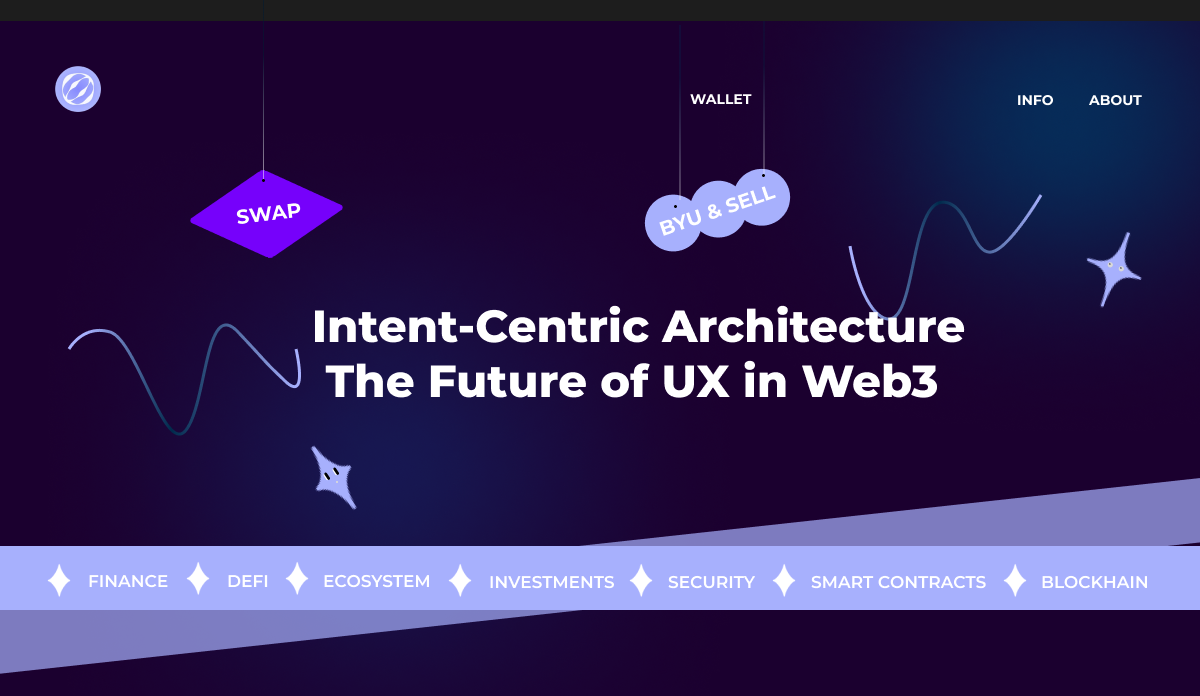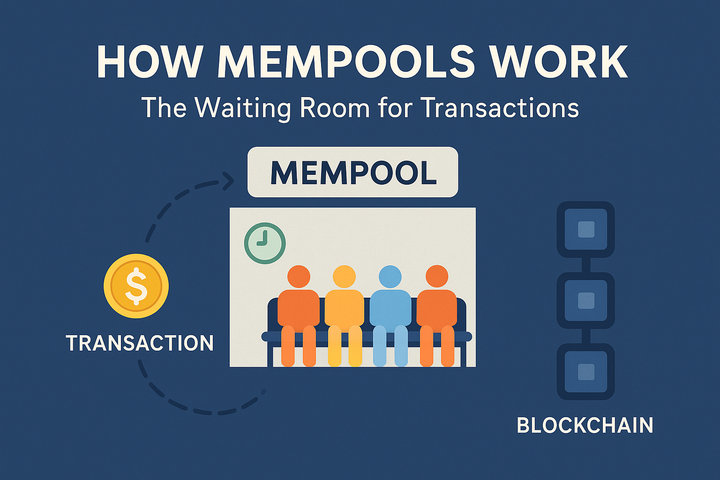🧠 Intent-Centric Architecture: Rethinking UX, Automation, and Composability in Web3

🚀 Introduction: Why Web3 Needs a New UX Paradigm
Despite massive innovation in permissionless infrastructure, Web3 still suffers from one big flaw: terrible UX.
Users are required to:
- Sign every transaction manually
- Understand complex flows (bridges, swaps, approvals)
- Manage gas and nonce logic
- Troubleshoot failed transactions
This is a "transaction-centric" model — users define how something should happen. But in most cases, they don't care how — they just care what they want.
Enter Intent-Centric Architecture: a model where users declare what they want, and the network figures out the best way to do it.
🔗 Paradigm: A New UX Paradigm for Web3
🔗 EF Research: Intents and Account Abstraction
💡 What Is an “Intent” in Web3?
An intent is a signed, off-chain declaration of user goal, not action. Examples:
- "Swap my USDC to ETH at the best available price."
- "Move my funds from Polygon to Arbitrum with low fees."
- "Deploy my stablecoins to the highest-yield strategy available."
The user doesn't specify how to do this — that's the job of solvers (autonomous actors or protocols that compete to fulfill intents in the most optimal way).
🔗 Anoma: What Are Intents?
🔗 CowSwap UX via intents
⚙️ How Intent Architecture Works (Step by Step)
- User signs an intent off-chain — no gas cost.
- Solvers (executors) watch for new intents and simulate possible executions.
- If execution conditions are met, a solver submits a valid on-chain transaction.
- Smart contracts validate the outcome, not the path.
- Solver gets a reward (e.g., arbitrage margin or tip).
Key benefits:
- ✅ Gasless UX (intent is off-chain)
- ✅ No failed transactions
- ✅ MEV-resistance through private execution
- ✅ Maximal composability
🔗 ERC-4337: Account Abstraction and Intents
🔗 MEV-Protection via Solvers – CowSwap Docs
🧩 Why Intents Are a Natural Fit for Modular Architectures
Intents shine in modular and composable systems. Protocols like Mitosis and Anoma already leverage modular design, which allows solvers to:
- Compose cross-chain swaps using synthetic assets
- Automate vault migrations
- Dynamically optimize strategies based on APY or risk
For example, Mitosis uses:
- Matrix Vaults (customizable strategies governed by DAO)
- Vanilla Assets (synthetic wrappers for cross-chain liquidity)
- Epoch-based execution (batching strategy updates)
🔗 Mitosis: Matrix Vaults
🔗 Vanilla Assets Explained
📊 Sample Use Cases in Mitosis Using Intents
| Scenario | User Intent | Solver Execution |
|---|---|---|
| Yield Farming | "Maximize APY on stablecoins" | Auto-routing to highest-yield Matrix Vault |
| Cross-chain swap | "Swap ETH → wBTC with minimal fee" | Uses Vanilla Assets for internal accounting |
| Risk Management | "Reduce ETH exposure by 50%" | Portfolio rebalance to USDC |
🔗 Cross-chain swaps without bridges
🔗 Epoch-based strategy execution
🌟 Key Benefits of Intent-Centric DeFi
✅ User-focused: the user defines what they want, not how to do it
⚙️ Programmable: solvers can compose intents across protocols
⛽ Gas-efficient: execution only costs gas when valid
🧩 Composable: solvers can reuse intents in bundles or batches
💸 Solver incentives: healthy competition for best execution
🔗 Blockworks: What Are Intents in DeFi
🔗 UniswapX: Intents and Order Flow Auctions
🔐 Security and Verification of Intents
Intents are not executed blindly. Each step is validated:
- ✅ Outcome-based verification in contracts
- 🔒 Sealed-bid auctions reduce frontrunning/MEV
- ⚠️ Malicious solvers can be slashed, blacklisted, or reported
- 🛡️ Private execution environments (e.g., SUAVE, Espresso) ensure intent confidentiality
🔗 Trail of Bits: Security in Intent Architectures
🔗 MEV Resistance via Private Orderflow
🗳 DAO Governance Over Intents (Case: Mitosis)
DAOs can govern:
- ✅ Which intents are allowed
- ✅ Which solvers are whitelisted
- ✅ Capital allocations per strategy
- ✅ Execution windows, parameters, and rewards
This gives communities control over automation logic — without needing every user to be a DeFi expert.
🔗 Mitosis Governance Docs
🔗 Morse DAO Vault Management Example
🌐 Ecosystem Players and Intent-Centric Projects
Some of the most exciting developments in this space include:
- Anoma: Intent-aware consensus & privacy
🔗 Anoma Whitepaper - Mitosis: Modular DeFi + intent UX
🔗 Mitosis Docs - SUAVE (Flashbots): Private orderflow for intents
🔗 SUAVE Overview - Espresso Systems: Shared sequencing with intent privacy
🔗 Espresso Docs - Stackup, Pimlico, Alchemy: ERC-4337 toolkits for Account Abstraction
🔗 Stackup on Intents
🔮 The Future: Standardizing Intents Across Web3
We're already seeing early signs of intent becoming a standard layer:
- ERC-based intent formats
- Open solver networks
- Intent routers & aggregators
- Intents across games, NFTs, DeFi, governance
Imagine: in the future, you’ll say “I want to buy this NFT and bridge to Arbitrum,” and it’ll just happen — via a modular intent router powered by competing solvers.
🔗 Ethereum Research Forum – Intents Spec
🔗 Intents as the Next Layer
✅ Conclusion: From Transaction-Centric to Intent-Driven Web3
Intent-based design is not a UX fix — it's a core architectural shift. It redefines:
- How users interact with blockchains
- How protocols coordinate
- How solvers compete to provide optimal results
Protocols like Mitosis, Anoma, and UniswapX are showing that intent-aware UX is not only possible — it’s inevitable.
The future of DeFi isn’t “click-sign-pray” — it’s “I want this” → “Done.”



Comments ()